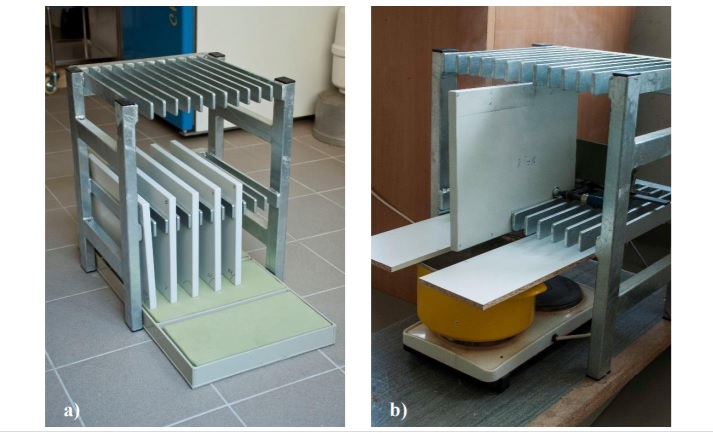- February 1, 2022
- Web Cube
- No Comments

Comparative Study of Conventional and Zero-joint Edgebanding
Autors: Mária Réka ANTAL, Levente DÉNES, Zsigmond András VAS, András POLGÁR
Abstract: Edgebanding affects both the visual appearance and edge protection of wood-based panels. In order for edgebanding to provide the desired protection, it must adhere strongly to the entire surface of the panel edges and maintain this adhesion throughout the life of the product. The present research compares conventional and so-called zero-joint edgebandings in terms of water and steam resistance, and examines the environmental impacts of edgebanding technologies using Life Cycle Assessment
(LCA). In-line with our hypothesis, our test results showed that corners are the critical points of edgebanded furniture fronts, especially when exposed to moisture.Due to high variations in measurements, there is no significant difference between the two edgebanding methods at the beginning. However, differences become more significant after longer treatment times. These differences amount to two quality categories after 6 hours and three quality categories after 12 and 24 hours. The edgebanded fronts exposed to water for less than 30 minutes experience no significant deteriorations with any of the edgebanding methods. In the case of steam resistance, zero-joint edgebanding provides better protection, especially after the second and third treatment cycle. We can state that the surplus costs of zero-joint technology are 1.45 times greater than costs associated with conventional technology. Both show the considerable costs of edging materials, chipboard, and electrical energy.
The applied environmental life cycle assessment (LCA) method corresponds to the requirements of ISO 14040:2006 and ISO 14044:2006 standards. We built up the environmental inventory and the life cycle model of the manufacturing technology using the GaBi Professional LCA software. In the impact assessment, we analysed the specific environmental impact categories of the differing production processes by technology according to the operation order of the manufacturing technology. In relation to traditional and the zero-joint edging technologies, according to all impact assessment methods, the life-cycle contribution rate was uniformly 47% traditional – 53% zero-joint by impact category. The higher indicator values of the zero-joint method are due to larger edge material consumption and higher energy demand. Zero-joint technology appears to avoid the application of conventional hot melt adhesives, but replacing these adhesives does not necessarily result in better environmental indicators. Nevertheless, zero-joint egdebanding does not just improve aesthetic appearance but also exceeds the durability provided by conventional edgebanding technology.
Complete article is available online for your reading.

Acknowledgements: This article was made in frame of the “EFOP-3.6.1-16-2016-00018 – Improving the role of research + development + innovation in the higher education through institutional developments assisting intelligent specialization in Sopron and Szombathely”. This research was supported also by Competitiveness Operational Program 2014–2020 Priority Axis 1 – Research, Technological Development and Innovation (RDI) in support of Economic Competitiveness and Business Development Action 1.1.1 – Large CD infrastructures, Project type: Innovation clusters Project title: “Transylvanian Furniture Cluster – an innovative cluster of European interest” by the Sectoral Operational Programme Human Resources Development (SOP HRD), ID134378 financed from the European Social Fund and by the Romanian Government.

